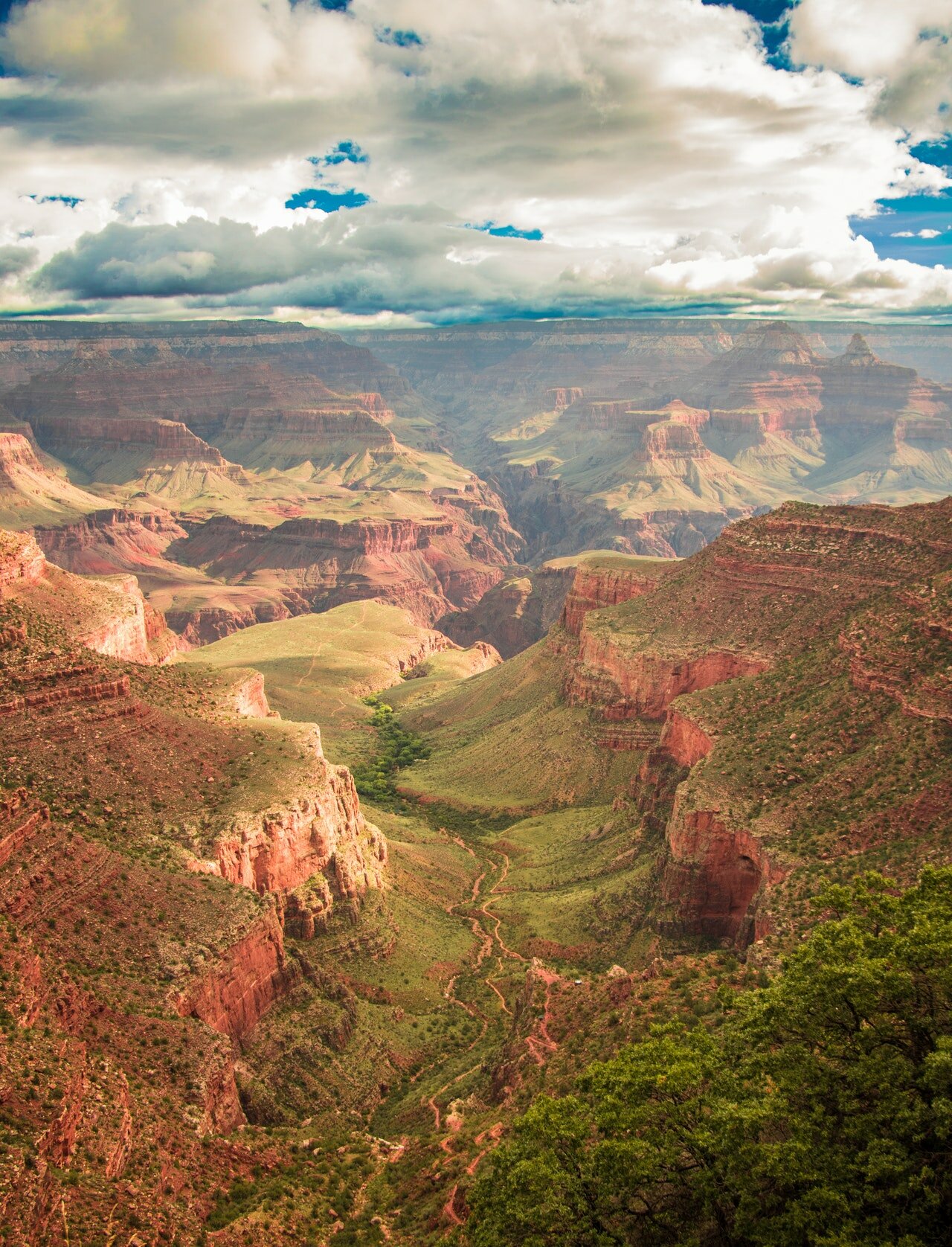Environment
Environment
Arizona Climate Protection & Beyond
My environment proposal is based on perserving our climate and way of life here in Arizona and beyond. Few some key points as well as the entire proposal below.
- Change Energy Sources
- Grid Batteries
- Electric Vehicle Infrastructure
- Civilian Climate Corps
- Sustainable GI Bill
- Smart Cities Initiative (SCI)
- Local Agricultural Sustainability Task Force (LAST)
- Restorative Land Management

Environmental Proposal
Tackling the Climate Crisis
Climate Change is currently the biggest threat facing humanity. There is no Planet B.
The Industrial Revolution gave us economies of scale & solved many human problems. We now have smart devices, smart cars, smart homes and millions of inventions that allow us to live a quality of life that would have seemed impossible even 50 years ago. Our entire economy—that is, all the activity we do as human beings—has been built around the ideal of simplifying human existence in order to allow us to have more time to live a life we choose over one that is consumed by the necessary tasks of survival.
The problem is that when we built this economy we paid very little attention to the environmental costs. We didn’t look past the costs of production and consider the significant cost of environmental impact. We were too busy looking at how these consumer products made life easier to consider what we do with them when they break or wear out. We didn’t think about the cost of dumping toxins in the ground, or disposing trash in the ocean, or the releasing of carbon into the air. Given the overwhelming evidence before us that our very existence is at risk, we better think and act upon it now because life here depends on it.
In order to meet the climate crisis, we are going to have to rethink and rebuild the entire economy from the ground up while it continues to grow. Think of it this way: the economy is like an old ship already out at sea and unable to return to dry-dock for repairs. So we have to fix it carefully, plank by plank, beam by beam, while moving and without sinking. It’s not easy, but it’s not impossible. We just need the desire. This challenge also provides our nation, our generations, and our workforce with the opportunity welcome and begin work on the next Industrial revolution. In Arizona, specifically, we have the ability to be the nation’s leader in solar energy production and create tens of thousands of high paying jobs in energy, transportation, and infrastructure projects.
It’s ironic that so many of the people and politicians who fight against every climate proposal are the same people who gladly tell you how precious life is. The same politicians who are funded by utility companies, fossil fuel industries, and lobbyists with agendas that prioritize profits over people. The industries who drive our own personal costs up without regard for our pocket books or health. The future and quality of life for my generation and that of my children will depend on the policy and action/inaction our elected officials take to address this issue.
It is impossible for any sensible climate plan to try to anticipate or solve every conceivable contributing factor to our current crisis, so I won’t begin to try. There are, however, some definite actions we can take now that will provide large reductions in greenhouse gas emissions. Rather than focusing on specific economic sectors, I want to differentiate between things that we can accomplish now—with available technology, political willpower, and scientifically-guided public policy initiatives—and the things that we can do over time to set future generations on the path toward an environmentally sustainable economy over the long term.
Solututions
I believe these are things we can start on now.
Change Energy Source
Given the advances in recent decades, yes, decades, in solar and wind generation, we should begin rapid retirement of all coal and gas-fired power plants globally and replace them with renewable facilities. We know how to do this and other countries are doing it successfully, include Saudi Arabia, Germany, and the Netherlands. We can learn from their example.
“But solar and wind can’t provide baseload energy!” Yes, it can, as other countries have shown us, but the reliance on baseload is less critical if you redistribute the generation to where it’s used. We need less baseload if all new homes and commercial buildings generate their own power and use the grid as a backup. Utilities won’t like this, but if they thought differently, they could see a clear path to do so, which is instead of building and maintaining polluting generators, underwrite the costs of installing solar on people’s roofs. Right now, APS and other utilities will grant you $10,000 to run a new power line to a new home. Why not use that money to install solar or wind generation? They still own the production and could maintain it, too. Whether they do it themselves or pay contractors, the money goes right into the local economy.
“But renewable energy isn’t mature enough!” Yes, it is. The United Nations said in a recent report that the renewable energy sector “is looking all grown up.” In April of this year, renewable energy supplied more power than coal for the first time. Bloomberg NEF believes renewables will replace all coal and nuclear plants by 2050, not because tree-huggers made them do it, but because renewables are cheaper. In fact, renewables are the cheapest form of energy in two-thirds of the world today! If the US adopted it, it would be even cheaper. Palo Verde Nuclear Plant is already investing in ways to integrate renewable energy and replace the use of fossil fuels.
“But the sun doesn’t shine and wind doesn’t blow all the time!” Yes, but it’s safe to say it is someplace and as long as we distribute the generation and include batteries in the mix, this isn’t a problem. Besides, Arizona’s largest coal plants are in the northeast corner of the state and the population centers are in the central and southern parts. That was never a problem. We know how to wheel electricity from point A to point B.
Grid Batteries
Advances in battery technology allows power generated during the day to be stored and used at night, Australia is already doing this, partnering with Tesla to provide power for its South Australia grid. Within weeks of coming online, “the big battery accounted for a 55% share in the state’s frequency and ancillary services market, and lowered prices in that market by 90%.” (https://reneweconomy.com.au/the-stunning-numbers-behind-success-of-tesla-big-battery-63917/)
Electric Vehicle Infrastructure
Every automobile manufacturer will introduce electric cars and trucks within the next five years. That will require significant increases in charging facilities and capacity. Federal and state government can accelerate the construction of this necessary infrastructure for electric or hydrogen vehicles by offering tax incentives to businesses that install them. Gas stations already have the electrical infrastructure to support adding chargers, why not give them a 100% write-off for doing so? The money they spend goes into businesses that installs them, which stimulates the economy and grows new industries.
Civilian Climate Corps
Combating climate change will take a universal commitment from every individual—no one is unimportant. Everyone should have an opportunity to help us build the economy of the future, and I can think of no better way than to give people a stake in building out the solutions. I propose that we create a Civilian Climate Corps to train and deploy volunteer citizens to help execute local projects in communities across the country. Ideally, young people would enter on graduation from high school, but every person could be eligible to volunteer.
Sustainable GI Bill
Based on the concept of the GI bill, If you are willing to give three years to your country to help with the move to renewable economy, then you can earn money for a college education, a down-payment on a home, or seed-money to start your own sustainable business. This will empower people to be a part of the solution, to work with their fellow citizens toward a common goal, and, for young people in particular, when their service is completed they will be given a stake in the future rather than saddled with debt.
Smart Cities Initiative (SCI)
Our cities were never conceived with contemporary life in mind. From traffic congestion to insufficient and inefficient public transit systems to the inefficient energy usage in public buildings, cities account for a massive amount of global carbon emissions. I propose a Smart Cities Initiative that will empower local communities to immediately address local problems with solutions designed for their needs. This program will help communities deploy sensors and actuators to monitor and improve traffic flow in real-time. Cities across America are already implementing these solutions successfully. SCI’s goal is to scale-up these technologies for deployment in urban and suburban areas across the country.
SCI will also provide financial support for regional planning consortiums that can assist communities in evaluating and implementing long-term, future-focused construction, redevelopment, and transportation strategies.
Local Agriculture Sustainability Task force (LAST)
The Intergovernmental Panel on Climate Change Special Report (IPCC Report) suggests that:
“Changing agricultural practices can be an effective climate adaptation strategy. A diversity of adaptation options exists, including mixed crop-livestock production systems which can be a cost-effective adaptation strategy in many global agriculture systems (robust evidence, medium agreement). Improving irrigation efficiency could effectively deal with changing global water endowments, especially if achieved via farmers adopting new behaviors and water-efficient practices rather than through large-scale infrastructural interventions. Well-designed adaptation processes such as community-based adaptation can be effective depending upon context and levels of vulnerability.
Agriculture remains a significant employer in Maricopa County (about 9,000 jobs) and few industries care more about the environment that small agriculture. Afterall, their livelihood depends on access to clean water and soils. I propose empowering local farmers and ranchers to be a part of the solution by creating regional Local Agriculture Sustainability Taskforces (LAST) that provide input to state and federal government to ensure that agricultural and urban land and water use policies are sustainable and reduce environmental impacts.
Restorative Land Management
It’s no secret that plants are great carbon collectors. When we look at deforestation of the Amazon and the world demands action to “save the world’s lungs.” We have forests in this country, too. Sadly, many of them are burning due to climate change. I propose that instead of leaving these forests and grasslands barren, that we replant them. We’ve had replanting programs before, we just stopped funding them. Let’s incentivize the companies who clear burnt lands to replant them. Let’s give our planet a lung transplant.
Conclusion:
These are a start. In and of themselves, these programs aren’t going to 100% solve the climate crisis. No program will. We have to accept the fact there is no silver-bullet answer that is cheap and easy. We should not be afraid of change. We should not be afraid of hard work or difficult decisions. We should not fail to act just because someone or some group disagrees with the program or the outcomes. We should not waste more time listening to deniers when we can see the impacts all around us. Some industries will have to change. Some markets will fade away while others are born.
Everyone knows you only get one chance to do it right the first time. Winston Churchill said “Americans can be counted on to do the right thing…after they’ve tried everything else.”
We’ve tried everything else. Let’s stop wasting time. Myself and others are proposing the next industrial revolution that focuses on addressing climate change and building an American Industry and economy no other world nation can compete with. It’s time the United States leads the way.
